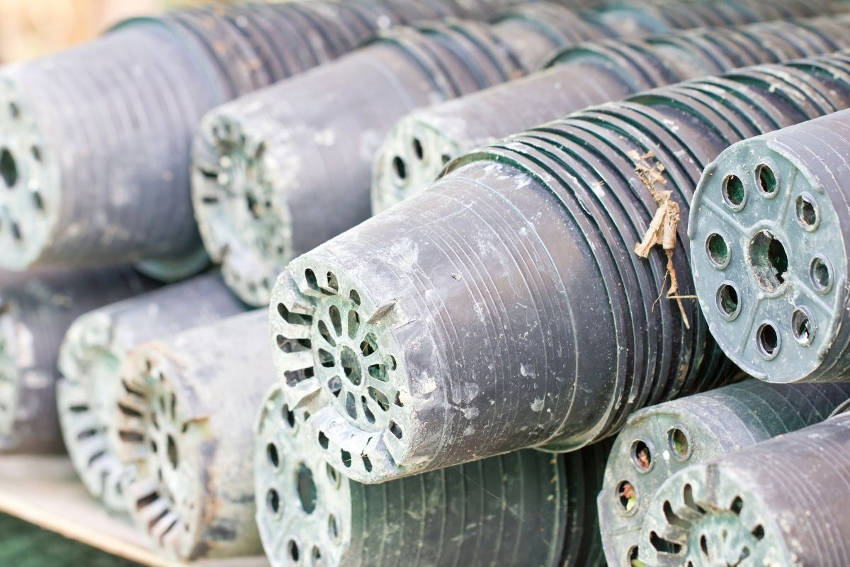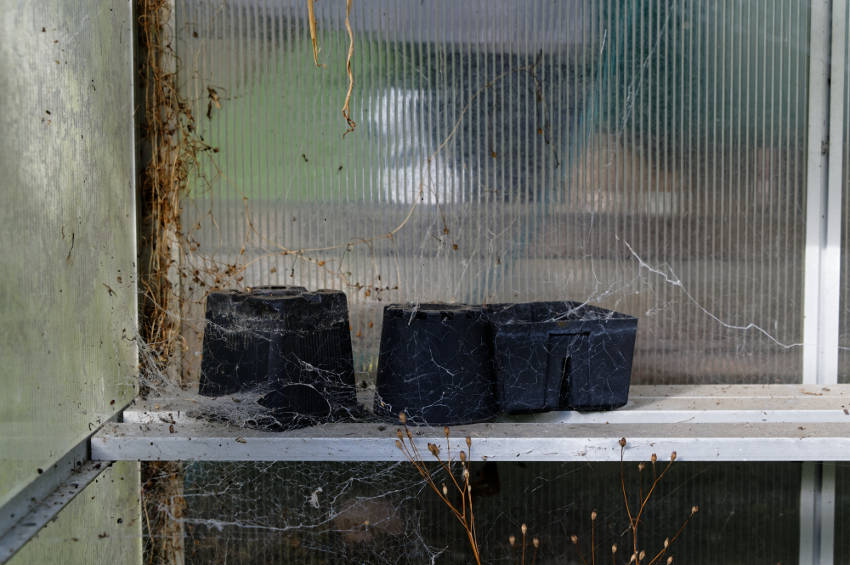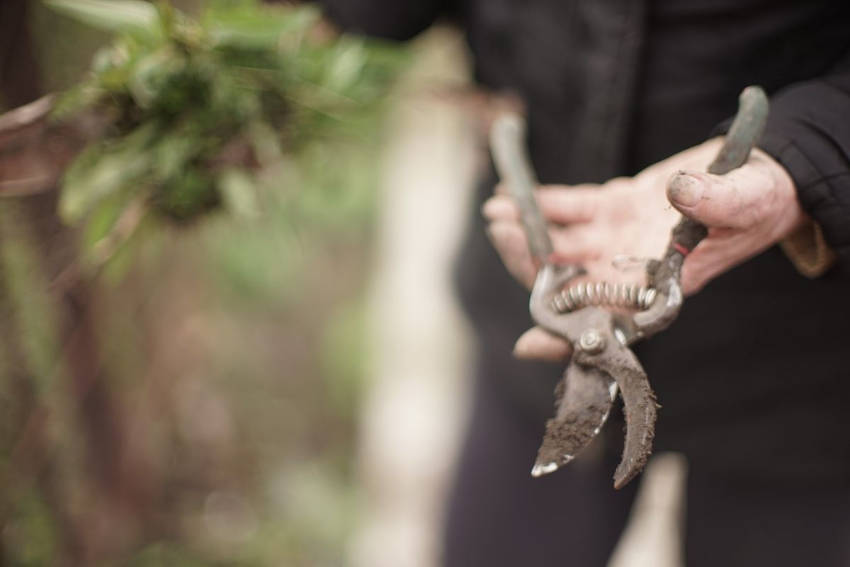Every gardener knows the frustration of losing a plant to pests or disease, whether its zucchini smothered by mildew or a whole row of seedlings undone by soil-dwelling grubs. There are many organic and chemical solutions for treating infestations and infections once they arise, but as with most things in life, prevention is better than cure.
Following some straightforward practices to keep your garden clean and tidy can make it much harder for pests and pathogens to gain a foothold, making outbreaks less frequent and less severe. Here are twelve of the easiest but most effective ways of maintaining great garden hygiene, giving your plants the safe conditions they need to thrive.
1) Clean and Disinfect Your Tools
Properly cleaning your tools after use is an effective way of slowing the transmission of pathogens. It's particularly important for cutting tools which can transfer any infection directly into the plant when pruning or harvesting.
After each use, wipe the tools clean with a rag, then use an ordinary alcohol-based hand spray to disinfect their cutting edges. Keep the cloth and spray handy in a belt pouch, and a quick clean will soon become second nature.
2) Spring Clean Greenhouses, Cold Frames, and Cloches
An annual spring clean of your cloches, greenhouse, and cold frames will help prevent problems growing from year to year. Wash the surfaces as thoroughly as you can with warm soapy water, then consider a mild disinfectant spray to neutralise any remaining pathogens.
The whole deep-cleaning job needs to be done only once a year, but it's useful to keep on top of cleanliness as you go.
3) Sterilise Pots and Containers Before Potting up New Plants
Making sure containers are clean before potting up new plants or sowing seeds is an essential step to stopping the spread of diseases in your garden.
- Firstly, wash containers in warm water to remove any soil or other residue; use a scrubbing brush if required.
- Next, soak containers in a sterilising solution for 10 minutes to neutralise any remaining pathogens. One part unscented bleach to 9 parts water is a common steralising solution used by home gardeners.
- Finally, allow the containers to drip dry and then they are ready for use.
4) Use Sterile Soil When Propagating
Living soil is vital for the all-round health of your garden, providing the microbes that sit at the base of the ecosystem. But it's not quite so helpful for any tender young plants that you're propagating. The 'wound' of the cut stem is easily infected, so use bought-in sterile compost or homemade sterilised soil to avoid problems, rather than just using any second-hand compost you have lying around.
5) Remove Diseased or Infested Plants ASAP
It's especially important to remove any infected or infested plants as soon as you spot serious symptoms, long before the problem can spread to others. Cutting away individually affected leaves or stems may be possible in the early stages, but once a plant is badly impacted then take no chances and remove the whole thing, including as much of the root system as possible.
But don't add any diseased plants to your compost heap after removal. Very few domestic heaps get hot enough to kill off pathogens, eggs, or larvae, so you run a real risk of infecting your heap, and from there the rest of your garden.
Instead, dispose of problem plants by burning or binning to ensure the contagion is stopped in its tracks.
6) Don't Spread Diseases Around
When removing diseased plants, be careful not to spread the problem around your garden, for example by dropping potentially infected clippings on your way to disposing of them. Also avoid transplanting seemingly healthy plants that have been growing near infected ones, and be careful not to tread soil from infected areas to healthy ones.
7) Remove Even Healthy Debris
Once your crops have been harvested or your flowers are past their best, remove any annual plants, fruits, and debris as soon as you can. Decaying matter provides both a food source and shelter for pests, and can also incubate dormant diseases so that they strike the following year. But so long as there are no signs of pests or infection, these leftovers can safely be composted.
8) Use Crop Rotation
Growing the same crop in the same spot year after year makes it easier for species-specific pathogens to build up in the soil, and overwintering pests will have an easy source of their favourite food from one year to the next.
A small amount of fungal disease may cause few problems one year, slightly more the next, and so on until the patch of soil can't support a crop at all. Switching your crops around each year acts as a circuit breaker, reducing the likelihood of any single pathogen gaining a secure foothold.
9) Careful Watering
Mildew and other forms of mould are major problems for many soft, leafy plants. While the underlying problem is caused by fungal spores, the spread is helped by damp, cool conditions. Reduce these by watering in the morning when possible, and by watering the soil rather than the plant. This keeps the foliage as dry as possible, and also lets excess moisture evaporate over the day rather than sitting around overnight and encouraging mould.
10) Use a Mulch
Watering problems can also be reduced by using a mulch around the base of plants. Not only does mulch trap moisture in the soil so you don't need to water as often, but it also helps prevent soil-borne fungal spores from splashing up to your plants during watering.
11) Maintain Good Air Flow
But even careful watering isn't effective if your plants are packed too closely together. Humidity can quickly build up without good airflow, leading to severe mildew in susceptible plants, particularly large-leaved, densely growing ones like zucchini or climbing beans.
12) Support Trailing Plants
It's also good practice to support trailing plants away from the soil surface, using canes, a trellis, or wall cables. Any foliage that's in contact with the soil is a prime target for mould, pests, and other problems.
13) Be Careful About Introducing Outside Problems
Your garden isn't a fully self-contained ecosystem, but you should be careful about the outside influences you introduce to it. Be wary about accepting plants from potentially untrusted sources, as they may be carrying pests, infection, or both. Where possible, buy seedlings, seeds, and even soil from a reputable garden centre or other trusted trader, and preferably one which supplies products produced locally to known standards.
But if you do obtain plants from other sources, it's wise to take a few precautions to reduce the risks involved.
- Check for any obvious problems on the foliage, and reject plants showing any signs of poor health.
- Remove the plant from the container and check the roots for bugs or deformities.
- Replace as much of the compost as possible with fresh, clean soil from a trusted source.
- Quarantine the plant in a relatively isolated place for a while rather than transplanting directly to your beds or borders.
It's not always possible to fully protect your plants against pests or pathogens, but you don't need to make life easy for attackers. By being careful over what you let into your garden, and also avoiding the conditions that encourage problems to spread, you can provide your plants with a healthy and hygienic environment and keep your use of emergency treatments as low as possible.








